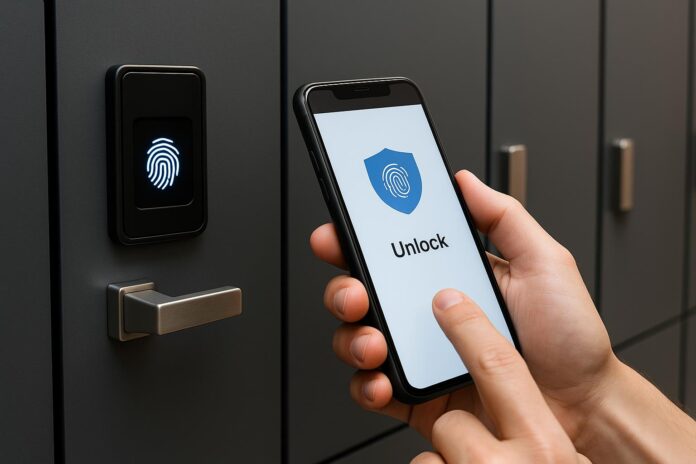In a world where efficiency, safety, and innovative design are top priorities, locker systems are no longer static storage units.
Today’s businesses expect more—more flexibility, more technology, and more security. That’s where solutions like smart lockers and mobile shelving systems come in.
One standout product in this category is the Compactus—a space-saving system designed to streamline storage while maximising floor space.
As industries grow more digitised and employees demand convenience without compromising on safety, the locker systems of tomorrow are already being implemented today.
The Role of Smart Lockers in Modern Businesses
The modern workplace is rapidly changing—hybrid working, flexible hours, and increased emphasis on data security have all reshaped how we store personal belongings and professional assets.
Smart lockers are now widely adopted in:
- Corporate Offices: For secure employee storage and IT equipment management;
- Universities and Schools: For managing student access, parcels, and gear;
- Healthcare and Emergency Services: Where staff need secure, fast, and hygienic access to uniforms and equipment;
- Logistics and Retail: Allowing 24/7 parcel collection and secure last-mile delivery.
Beyond their obvious benefits, smart locker systems offer real-time data and usage tracking. This allows facilities managers to monitor demand, plan maintenance, and improve workflows.
The integration of Compactus shelving allows for further optimisation. Thanks to their movable design that removes the need for fixed aisles, these systems allow for high-density storage while ensuring easy access—a smart, compact, and secure storage solution all in one.
How Technology is Revolutionising Locker Systems
What sets today’s lockers apart is how deeply they integrate with advanced technologies. The focus has shifted from simply storing items to delivering intelligent, adaptable solutions that offer convenience, data, and peace of mind.
Key innovations include:
- IoT integration for remote monitoring and predictive maintenance;
- Cloud-based management platforms that allow access permissions, usage logs, and analytics;
- Mobile apps to reserve lockers, receive access notifications, and manage delivery pickups.
As more companies aim for digitisation, this technological integration transforms locker systems into valuable business assets rather than passive storage furniture.
Businesses choosing locker solutions today should look for systems that solve current needs and adapt to evolving digital ecosystems. This is where modular solutions like Compactus shelving systems provide long-term ROI.
Enhancing Security with Advanced Locker Solutions
Security is no longer a luxury—it’s a necessity. Locker systems today must offer more than a basic lock and key. They must protect sensitive data, expensive equipment, and personal items while ensuring that only authorised users have access.
Top-tier security features now include:
- Biometric access controls (fingerprint, facial recognition);
- RFID-enabled access, which uses radio frequency identification to authenticate users through cards or tags, allows for fast and secure user verification;
- Audit trails to monitor and log every access event.
These features are vital for environments dealing with sensitive information (like government departments or law firms) or high-value assets (such as electronics in schools or media production).
Mobile units like Compactus further reinforce security by allowing entire storage blocks to be physically closed and locked in one motion, reducing unauthorised access to zero.
The Rise of Digital Locks and Contactless Access
In the post-COVID era, hygiene and convenience are equally important. That’s why digital locks and contactless access are catching on fast—they’re smarter, quicker, and more convenient.
Users now expect:
- PIN code access instead of shared keys;
- Smartphone-based access using QR codes or NFC;
- Zero-contact pickup and delivery lockers, especially in shared-use buildings.
These changes are cleaner and smarter. Minimising physical touchpoints lowers health risks while speeding up the process for users and administrators alike.
Locker banks with Compactus shelving structures make managing contactless systems in large facilities easier. These systems combine high-density storage with user-friendly, hygienic technology to match the modern usability standard.
Future Trends in Locker Systems: What to Expect
As locker systems evolve, we can expect the following trends to take centre stage:
1. AI-Powered Lockers
Artificial Intelligence will increasingly handle administrative tasks—analysing usage trends, predicting maintenance needs, and suggesting space-saving configurations.
2. Integration with Smart Buildings
Locker systems are set to become fully integrated smart infrastructure components, responding to energy usage, facility layouts, and environmental conditions.
3. Sustainable Design
Eco-conscious businesses are demanding sustainable lockers made with recyclable or low-impact materials. Look out for greener production methods and energy-efficient components.
4. Customisable and Modular Systems
Flexibility remains a priority. Systems like Compactus will continue to gain traction thanks to their ability to scale with the organisation and adapt to shifting spatial requirements.
5. Hybrid Use Lockers
Lockers will go beyond simple storage—expect to see integrated charging stations, climate-controlled compartments, and temporary workstations to accommodate the mobile workforce.
The Future Is Locked In
Locker systems are entering a transformative era. Gone are the days of traditional cabinets with padlocks and lost keys. Today’s storage solutions are intelligent, secure, hygienic, and designed with adaptability in mind. And they’re already setting a new standard for business environments.
Forget clunky cabinets and lost keys—modern locker systems like Compactus mobile shelving and smart, secure access are changing the game. With the proper setup, businesses can boost productivity and stay one step ahead in today’s fast-moving, tech-driven world.
As locker systems become part of broader digital infrastructure strategies, one thing is clear: smart storage is no longer an option, but a necessity.

